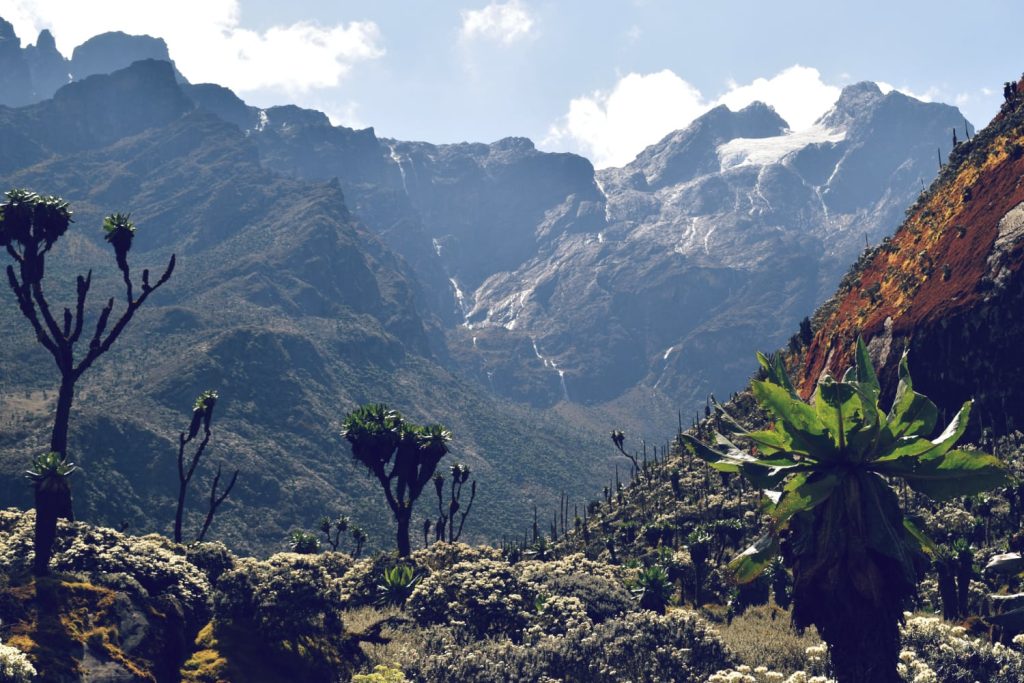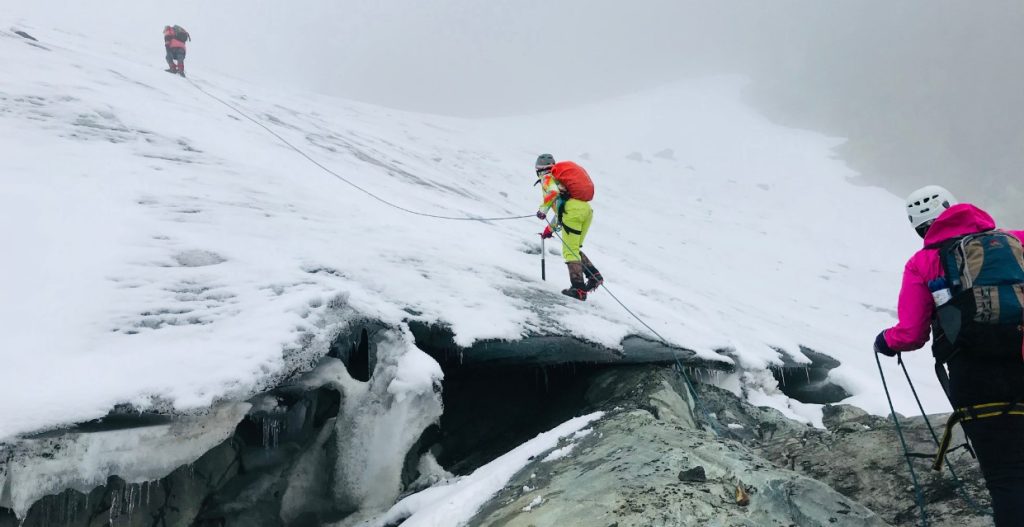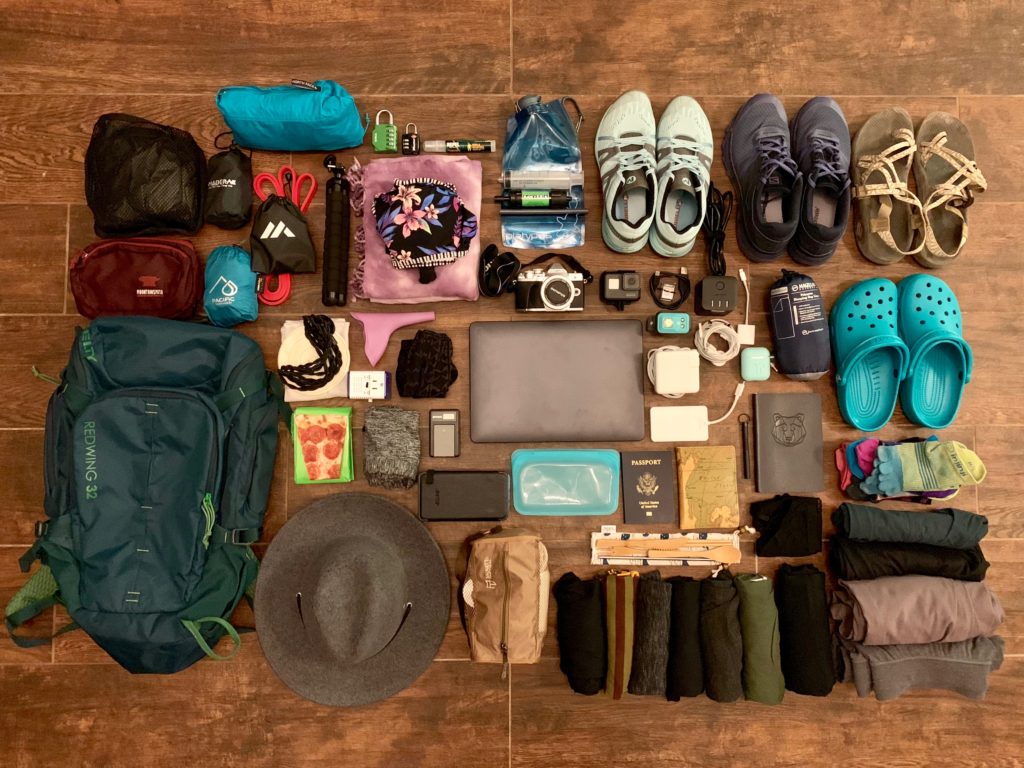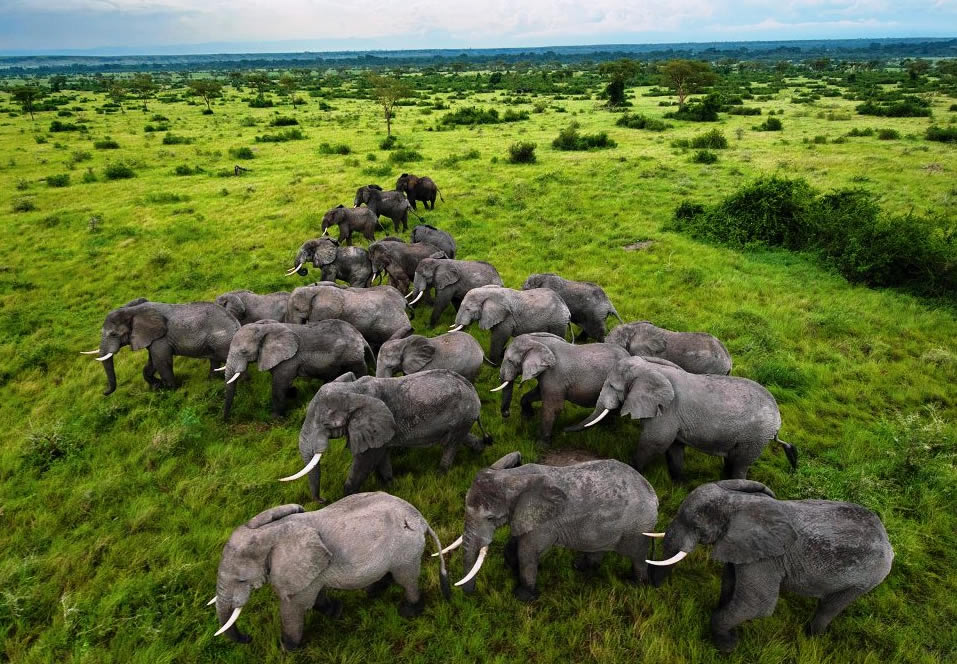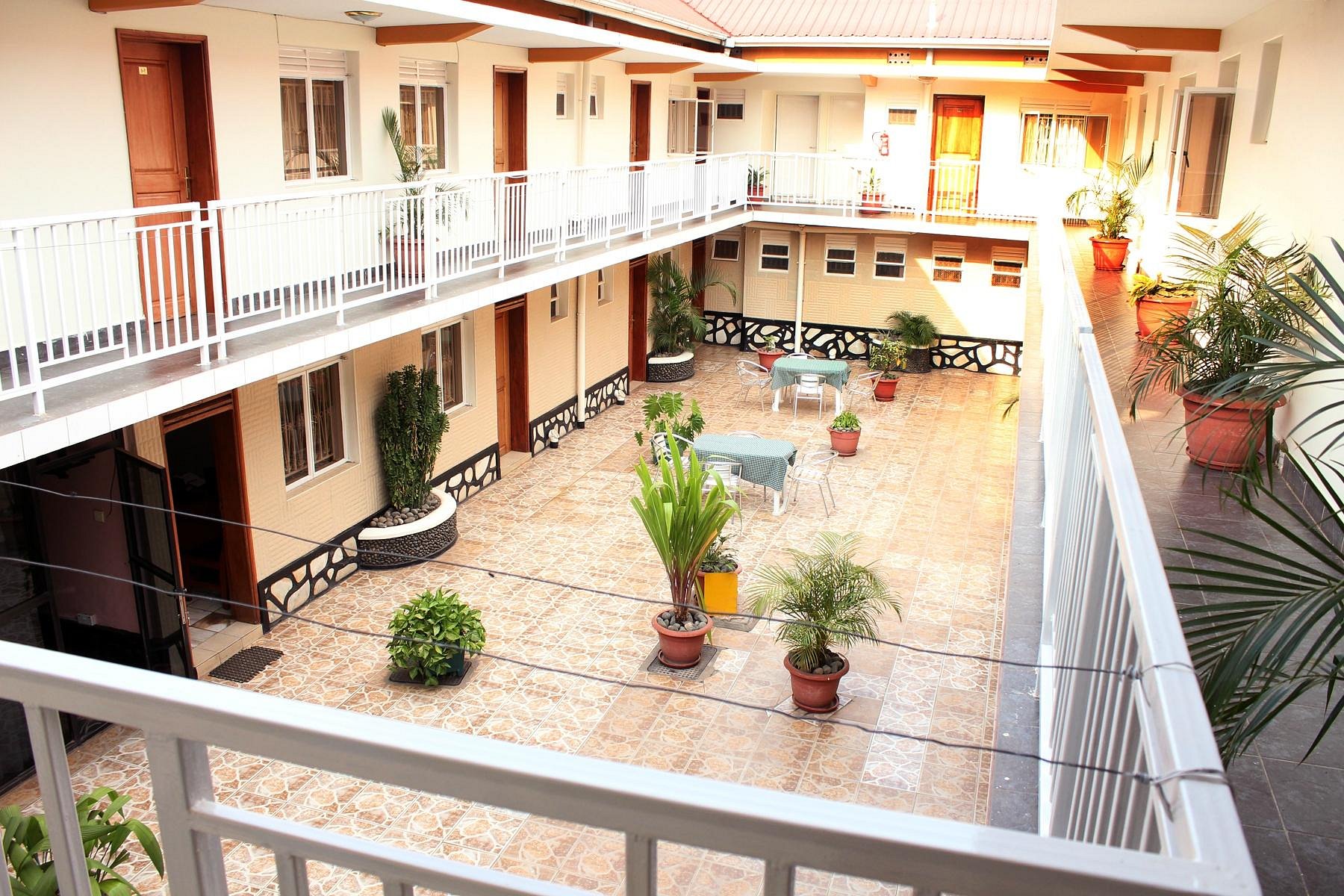
Rwenzori Trekking Services: Plan Your Ultimate Mountain Hike
Embark on a once-in-a-lifetime trekking adventure through the breathtaking peaks of the Rwenzori Mountains in Uganda with the best cheap, budget or luxury Rwenzori Trekking services and guide from Kilimanjaro Rwenzori climbing experts. These Kilimanjaro Rwenzori experts provide the best affordable Rwenzori trekking services tour packages in Africa. Also, this mount Rwenzori UNESCO World Heritage site offers a rare blend of natural beauty, cultural encounters, and thrilling mountain climbs for adventurers.
From towering glaciers to cascading waterfalls and verdant valleys, these Mountains provide a unique Rwenzori trekking experience. When you make your way up the trails of the Rwenzori Mountains National Park, you’ll be surrounded in a view that features the snow-capped Margherita Peak. In addition to wonderful ridges, lush jungles, and uncommon animals in Rwenzori.
During your Rwenzori mountains trekking in Uganda, you’ll discover a world of wonder that few have witnessed. You will be in awe of the breathtaking scenery created by the snow-capped peaks of Mountain Rwenzori, including Margherita Peak. Experience the Rwenzori Mountains National Park’s abundant biodiversity, which includes a wide variety of endemic plants and animals. With the help of our first-rate Rwenzori Trekking services in Uganda, observe uncommon bird species, elusive monkeys, and more.
Maybe you are an expert climber or a nature lover looking to explore a new area, our Rwenzori trekking services provide a singular and remarkable experience. Explore the splendor of the Rwenzori Mountains in Uganda, push yourself to the limit, and discover your inner explorer. This trek Rwenzori tour from the experts will leave you with lifelong memories.
Getting to the Rwenzori Mountains: Use the best Rwenzori trekking services
Mountain Rwenzori ranges can be accessible in Uganda and through the neighbouring country Democratic Republic of Congo. Considering Uganda, specific routes connect to the destination in relation to where you are coming from. Two routes connect from Kampala, the capital city, to either Kasese or Fort Portal; the longest one being taken from Kampala via Masaka – Mbarara -Bushenyi-Kasese (about 427km).This takes you through Queen Elizabeth National Park and the Equator line.
And also, experiments are made evidently for those who desire to make a stop, and have a more venturesome experience. It takes about 7-8 hours to reach the destination via this route. The shortest route get to Rwenzori mountain is from Kampala – Mityana -Mubende – Fort Portal (about 315km). It takes about 5-6 hours. These routes are suitable for travellers who prefer using road transport and for a more adventurous experience.
Air transport is another option as it takes about an hour and a half from Entebbe International Airport to Kasese Airstrip. There is a morning and an afternoon flight which provides a scenic view through the varying landscape. Lastly, note that our Rwenzori trekking services cover transportation from the start to the end of your Rwenzori tours in Uganda. We also have 4×4 car rentals in East Africa hence also provide self drive Uganda services for one who wants to get to Rwenzori Mountains in Uganda.

RWENZORI TREKKING SERVICES & OTHER ACTIVITIES AT RWENZORI MOUNTAINS NATIONAL PARK
There are different ventures that tourists can engage in while at the park including the Rwenzori trekking services at Mount Rwenzori peaks. Some of these top things to do in Rwenzori include;
Introduction to Rwenzori Trekking Services: Routes, Culture & Worst/Best Time to Visit Rwenzori Mountains
Our Rwenzori Trekking Services by the Rwenzori experts are suitable for all types of adventurers-from the seasoned mountaineer to the first-time trekker.They ensure a safe, enjoyable, and unforgettable Rwenzori hiking journey. Rwenzori mountains in Uganda are an attractive exploration site in Uganda and hiking or mountain climbing is one of the best-done activities amongst tourists in this region.
It is undoubtedly a fun and unique experience one could ever have as it gets you occupied and amazed at almost every turn. There are different schedules from which one could choose to trek the Rwenzori peaks for a given number of days according to one’s preference. Some give it 12 days to do so and others as less as 9 or 7 days to camp along the forested slopes and clouded valleys. You would need your energy and enthusiasm to explore effectively.
Why Book Our Rwenzori Trekking Services?
The choice of service can make a big difference, and for trekking in the Rwenzoris, here is why our Rwenzori trekking experts provide the best rwenzori trekking services:
- Experienced Guides: The guides are certified and quite conversant with the Rwenzori Mountains for safe and insightful treks.
- Quality Equipment: High quality, water- and wind-resistant camping gear for assurance of comfort in bad weather conditions.
- Eco-Friendly Practices: Our Rwenzori experts support our local communities with ecologically responsible services for their conservation needs.
- Personalized Itineraries: From Rwenzori group treks to solo journeys, we will help adjust routes and schedules that fit your interests and fitness level.
Popular Mount Rwenzori Trekking Routes
Our Rwenzori trekking experts provide well crafted Rwenzori mountain Tour packages which are part of our Rwenzori trekking services and they all follow different mountain Rwenzori Trekking Routes. There are two main Rwenzori trekking routes through which one may trek the Rwenzori mountains; the Kilembe route and Central circuit route. The Kilembe trail is suitable for experienced hikers as it is very steep, rough and quite complicated to win. One would require extra energy and a great physique in fitness. However, it gives an outstanding view of the forested rocky areas and the marshy pristine environments.
- The Central Circuit Trail:
- Ideal for moderate to experienced hikers.
- Takes about 7-10 days depending on your pace and stops.
- Passes through stunning scenery, including valleys, glaciers, and towering peaks. This route offers a balanced view of the various ecosystems.
- The Kilembe Trail:
- Suited for seasoned adventurers due to its steep and rugged nature.
- Steeper and more demanding, this trail rewards trekkers with exceptional views of forests, rocky outcrops, and higher altitudes.
Both routes involve staying at campsites, with opportunities for breathtaking vistas and cultural interactions with the Bakonzo people.
The Central circuit trail on the other hand is ideal for most hikers because its less challenging. It is the oldest and mostly used route
towards the Magherita Peak. It is slightly longer and has a great view of all the other peaks and the vegetation terrain. Every route taken involves a unique and exciting experience due to the vast adventures along the way, some of which include deep gorges harbouring rivers like Nyamwamba, Mubuku, Nyamugasani, among others. There are various stops/camps and cabins along both routes where hikers rest or sleep when its dawn.
If you have little time but still want to feel the magic of the Rwenzori Mountains, our Rwenzori experts can offer 2-3 day treks. These Rwenzori shorter routes give a glimpse into the varied ecosystems and rich flora that the mountain boasts. Highlights: Rwenzori short treks include visiting lower slopes, scenic waterfalls, and dense forests.
Types of Rwenzori Trekking Services Offered
We offer a range of Rwenzori trekking services to suit different preferences and experience levels during your Rwenzori expeditions:
- Rwenzori Guided Treks: Guided by our highly experienced Rwenzori trekking expert guides, these treks emphasize safety and bring you closer to the ecosystem of the mountain.
- Porter Services: If one intends to lighten the physical load, we have the best Rwenzori porter services whereby the porters carry the gear while you focus on the trek.
- Customized Rwenzori Trekking Packages: Let us help you create your perfect Rwenzori adventure! We have Rwenzori trekking options for solo travelers, couples, groups, and private tours with flexible affordable Rwenzori trekking itineraries for either our luxury or budget Rwenzori hikers.
- Camping & Accommodation: We have comfortable camping and accommodations along the trails, from designated sites to rustic huts. Note: We also provide accomodations which are luxury hotels or budget hotels in Towns near Rwenzori that is Fort portal and Kasese suitable for acclimatization, city and cultural towns before your Rwenzori trek.
The Rwenzori Trekking Experience – What to Expect
The Rwenzori trek is one of those few expeditions that takes you across several unique ecosystems, ranging from tropical forests to bamboo zones, alpine meadows, and glacial landscapes. In regard to altitude gained, there is a dramatic variation in flora and fauna, with rare plant species like giant lobelia and shy wildlife such as the Rwenzori colobus monkey. Rwenzori Trekking Difficulty: Moderate to challenging, with steep climbs, slippery trails, and unpredictable weather.
Worst/ best time to visit Rwenzori mountain in Uganda;
Mountain Rwenzori in Uganda can be visited at any time of the year, however, for hikers July, August throughout September, and December throughout January is the best time to climb Rwenzori mountain up to Margherita peak. The worst time to visit Rwenzori mountains in Uganda is during the wet seasons, which typically occur in April, May, October, and November.
These months are usually warm and dry making the conditions favourable in terms of safety. This doesn’t mean that Rwenzori hiking ceases during the wet season! For such conditions, be prepared to receive showers that are likely to make the muddy and rocky ground slippery but we always aim to provide the best Rwenzori trekking services even during this season . Waterproof gear like raincoats, gumboots are necessary regardless the kind of weather.
Safety Measures and Guidelines During Your Rwenzori Trekking Expedition
Safety is our top priority. Our guides are well trained in high-altitude first aid and with means of communication for emergencies. Here’s how we keep you safe:
- Altitude Acclimatization: Our best affordable Rwenzori itineraries include acclimatization days to avoid altitude sickness.
- Emergency Response: Our Rwenzori trekking experts have clear evacuation procedures and medical support.
- Hydration and Nutrition: We recommend constant hydration and nutritious meals that give a boost of energy.
Rwenzori Trekking Services Cost/Pricing and Booking Information
Our Rwenzori Trekking Services are well priced and ensure great value for money, ensuring an unforgettable experience. What’s Included in your Rwenzori trekking cost:
- Permits and entry fees
- Guide and porter services
- Meals and accommodation on the mountain
- Camping gear and safety equipment
- Booking Options: Various payment options are available with a safe means of booking. Refund Policy: A flexible refund/cancellation policy is in place in case of cancellations due to unforeseen circumstances.
Mountain Rwenzori Cultural Encounters and Community Tours
Cultural encounters are undeniably present here as natives who are mostly the Bakonzo proudly perform admirable practices that wouldn’t miss your attention like vibrant dance performances, drumming, basket weaving, story-telling and local meals prepared asides form trekking Rwenzori mountain. Tour guides lead you through the villages at specific spots as they inform about the ways of living. Natives utilise ‘’Enkoni stick’’ for support when taking nature walks or climbing at a higher point, a traveller may or may not require to have one.
Birding while trekking Rwenzori mountains gives you the opportunity to view various and unique bird species like the famous Rwenzori Turaco, Rwenzori nightjar, Black duck, Rufous sparrow hawk, African Lammergeyer , Archer’s robin chats, among others. Bird watching in mountain Rwenzori is ideal during the dry season although it may be done at any time of the year.
Climate;
The proximity of Mountain Rwenzori ranges in Uganda to the Equator brings about both wet and dry conditions along the slopes and around the areas in the region. Fortunately, neither the extremes of winter nor summer weather are present in this region, however the risks related to climbing and trekking mountain Rwenzori increase as it becomes wet. Effects of cold, rainy weather and muddy ground could get quite uncomfortable in the process, therefore, it is crucial knowing about the conditions prior to climbing. Safety precautions are made known to mountaineers and tour guides are present to help especially in instances of unpredictable weather events.
Accomodation
Travellers would never fail to access a place to stay during their visit at the Rwenzori mountains National Park in Uganda because the park correlates with outside and inside accommodation facilities from budget, mid-range to luxury with comfortable bedrooms and living rooms like lodges, guest houses and hotels. Some of these include Mweya Safari lodge which is located on a peninsula within the heart of Queen Elizabeth National Park, the Equator Snow Lodge, Magherita Hotel, Ruboni Community Camp, Mihunga Safari Lodge, Geolodge, among
others.
Rwenzori Trekking Essentials: What to Pack
The following equipment is essential when visiting mountain Rwenzori ranges in Uganda for trekking services; light clothes for trekking, hiking shoes, thick and warm socks, gloves, light rain coat, waterproof trousers, hat, rubber boots, sleeping bag, back pack for personal gear, torch, small towel, first-aid kit, drinking water, snack, lunch box, camera among other essentials. Some of these items are present for sale at the site.
Safety Tips for Rwenzori Trekking
- It is fundamental for mountaineers to know their fitness level prior to climbing so as to determine the best route to use.
- Carry a water bottle for continued rehydration and a snack as you would need your energy.
- Also avoid alcohol while on this trip so as you keep steady.
- Keep along the trail in order to avoid getting lost.
- Talk to your guide in case of emergencies like altitude sickness.
- Trekking poles which are locally termed “enkoni” are sometimes essential.
However, rules and regulations have been made by the Uganda Wildlife Authority and the Uganda Tourism Board concerning the governance of Rwenzori National Park towards hikers.
For example, respect of others especially for those sharing huts, observing the prohibition of wood fire, not littering in the park, accepting the park’s limit of 16 persons per hut per night and minimizing damage along the trails.
With a combination of exhilarating treks, cultural encounters, and breathtaking natural beauty, the Rwenzori Mountains offer an unparalleled trekking experience in Uganda. Whether you are climbing to Margherita Peak or exploring the rich biodiversity of the lower slopes, Rwenzori trekking services ensure you have the adventure of a lifetime.
Frequently Asked Questions about Rwenzori Trekking
1. How difficult is Rwenzori trekking?
Answer: Rwenzori trekking can be challenging as there are steep climbs and at high altitude. Physical fitness and preparation are recommended.
2. What is the best time to visit the Rwenzori Mountains?
Answer: The best time to visit/climb/hike the Rwenzori mountains in Uganda is during the dry seasons: December to February and June to August.
3. What gear is needed for the Rwenzori trek?
Answer: Essentials include warm clothing, waterproofs, sturdy boots, a headlamp, and a sleeping bag. Detailed packing lists are provided upon booking with us.
4. How many days does it take to trek Rwenzori mountain?
Answer: This depends on the Rwenzori trekking route taken, but generally, Rwenzori trekking can be from 2-9 days.
Contact Us / How to Book For Your Rwenzori Trekking Services
Ready to start your journey into the “Mountains of the Moon”? For more information or to book your Rwenzori trekking tour today, please contact us. Our Rwenzori Kilimanjaro experts team is available to answer questions and help plan your adventure via email, phone, or WhatsApp.
Kilimanjaro Rwenzori experts, Tour operator
- Phone Number: +256702571234
- Email: rwenzorikilimanjaro@gmail.com
Top and Featured Rwenzori trekking services tour packages
Below is a set of the top/best and most featured Rwenzori trekking services tour packages/expeditions for the best Rwenzori Trekking experience as crafted by our top Kilimanjaro Rwenzori Trekking experts.

Central Circuit Route (7 Days) – The Classic Rwenzori Trek

Kilembe Route (8 Days) – The Scenic Adventure

Margherita Peak Climb (8 Days) – The Ultimate Challenge

Rwenzori Birdwatching (4 Days )Discover Avian Wonders
Rwenzori trekking itineraries
Kilimanjaro climbing tours, Tanzania
Useful links + other African safari packages
- Rwenzori trekking services
- Kilimanjaro Climmbing guide
- Rwenzori trekking guide
- 3 day gorilla trekking self drive to Bwindi
- 3 day Queen Elizabeth self drive from Kampala
- self drive Uganda
- Car rentals 4×4 East Africa
- Masai Mara Great Migration
- Serengeti Wildebeest Migration
- Big 5 safari Uganda
- Best time to visit Rwenzori
- what to pack for your trek
- Kilimanjaro vs Rwenzori
You might also like:

